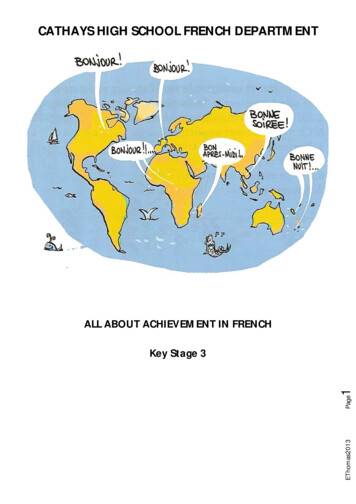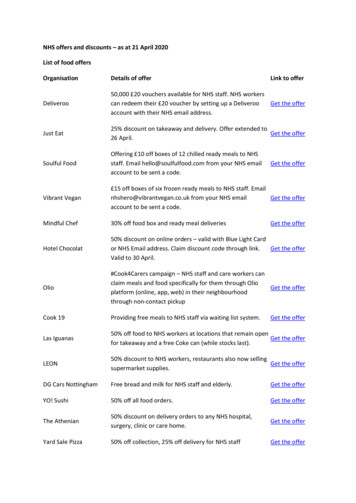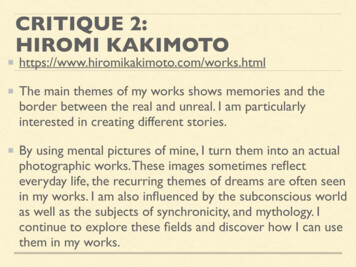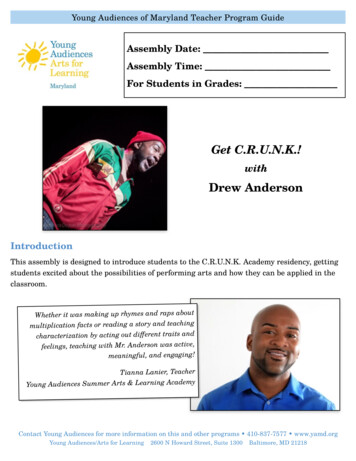
Transcription
Young Audiences of Maryland Teacher Program GuideAssembly Date:Assembly Time:For Students in Grades:Get C.R.U.N.K.!withDrew AndersonIntroductionThis assembly is designed to introduce students to the C.R.U.N.K. Academy residency, gettingstudents excited about the possibilities of performing arts and how they can be applied in theclassroom.Whether it was making up rhymes and raps aboutmultiplication facts or reading a story and teachingcharacterization by acting out different traits andfeelings, teaching with Mr. Anderson was active,meaningful, and engaging!Tianna Lanier, TeacherYoung Audiences Summer Arts & Learning AcademyContact Young Audiences for more information on this and other programs 410-837-7577 www.yamd.orgYoung Audiences/Arts for Learning2600 N Howard Street, Suite 1300Baltimore, MD 21218
Young Audiences of Maryland Teacher Program GuideGet C.R.U.N.K.!withDrew AndersonThe assembly “Get C.R.U.N.K.!” utilizesmusic, video, live performance, andaudience engagement to show studentshow hip hop, theatre, parody, poetry,and comedy can be used to help expresstheir ideas, review unit concepts,prepare for tests, and have greatcreative fun. This assembly alsoengages the students with some of thecreative icebreakers involved in theC.R.U.N.K. Academy residency,including “Say What?” and “What’s SoFunny?” Overall, the audience will beinvited to be Creative, Rapturous,Unified, Natural, and Knowledgeable;in short, to “get C.R.U.N.K.!”Program DescriptionWelcome to “Get C.R.U.N.K.!,” an engaging and lively assembly designed to share themagic of performing arts with your students. In this assembly, veteran educator DrewAnderson will guide your young charges into the adventure of getting C.R.U.N.K.:Creative, Rapturous, Unified, Natural, and Knowledgeable! Through a colorful PowerPoint presentation, Mr. Anderson will show how he has used his love for hip hop,theatre, parody, poetry, and comedy to teach reading, history, and even math andscience. Then your students will get in on the fun as they share regional slang, helpact out one of Mr. Anderson’s songs, and share their favorite (school-appropriate) jokes!Contact Young Audiences for more information on this and other programs 410-837-7577 www.yamd.orgYoung Audiences/Arts for Learning2600 N Howard Street, Suite 1300Baltimore, MD 21218
Young Audiences of Maryland Teacher Program GuideGet C.R.U.N.K.!withDrew AndersonInside this guide: Artist Bio Table of Contents Standards VocabularyGeneral Information:Setup Requirements: A projector and all associated adapters for effective display from laptop [Optional] A laptop computer, ideally with internet access List of Additional ResourcesArtist Arrival Time: Background/AdditionalInformationSuggested Introduction: Pre-Performance Activities30 minutes prior to performance“Please welcome the Professor ofC.R.U.N.K. Academy, Drew Anderson!” Post-Performance ActivitiesInclement Weather Background InformationDON’T WORRY! Artists will follow school closings and delays and willwork with you to reschedule the performance if necessary. Lesson Plan HandoutsYoung Audiences Contact Number:410-837-7577Call 410-837-7577 and follow the prompts to be connected with a staffmember on call for After Hours or Emergency.After Hours / Emergency Number: Call 410-837-7577 and follow the prompts to be connected with astaff member on call.Contact Young Audiences for more information on this and other programs 410-837-7577 www.yamd.orgYoung Audiences/Arts for Learning2600 N Howard Street, Suite 1300Baltimore, MD 21218
Young Audiences of Maryland Teacher Program GuideGet C.R.U.N.K.!withDrew AndersonArtists Bio:Entertainer and educator Drew Anderson has spent his entireadult life engaging audiences as a teacher and performer of hip hop,spoken word, and comedy. In recent years, he has had the honor ofrepresenting arts, education, and their creative conjunction in theDistrict of Columbia and the state of Maryland as a YoungAudiences Teaching Artist Institute Fellow and repeat DCCommission on the Arts and Humanities Fellow. As a middle andhigh school science teacher, Drew found himself marrying theprinciples of biology, chemistry, physics and health with thedynamics of drama, the poignancy of poetry, and the heartbeat ofhip hop. Now, he is melding arts and academia even morepurposefully and productively through two new innovative writing/performing arts-based programs: C.R.U.N.K. Academy and SpoofSchool.Droopy The Broke Baller is an entertaining,funny, charismatic feature that is onlymatched by his amazing hosting! When I metDrew in North Carolina, he had everyone inthe room in stitches. I HAD to then have himfeature in Michigan! He later crushed allthree of our shows and welcomed me to hislocation. Lo and behold, he runs one of THEBEST spots in DC! The total package righthere!As the public speaking expert for the Senior ChallengeAcademy,Drew’s Spoof School inspired the students to masterskills that manypeople continue to struggle with through adulthood.By sharing hisknowledge through lively demonstrations and constructivefeedback, heemboldened the students to be completely present in theirown work.Using his artistic background, Drew even collaboratedwith other staffto create a music video spoofing a popular song to encourage thestudents before their final competition. His finesse, passion, andcharisma engaged our youth in a way I haven’t seen inprevious years.Steph BuntonDirector of Teaching & LearningOne World Education Marcel Price aka Fable The PoetPoet Laureate of Grand Rapids, MichiganContact Young Audiences for more information on this and other programs 410-837-7577 www.yamd.orgYoung Audiences/Arts for Learning2600 N Howard Street, Suite 1300Baltimore, MD 21218
Young Audiences of Maryland Teacher Program GuideGet C.R.U.N.K.!withDrew AndersonTable of C.R.U.N.K. Contents(Order of Events for “Get C.R.U.N.K.!” Assembly)Introduction (Footage from previousC.R.U.N.K. Academies)“C” is for “Creative”: How the creativity of hiphop music can be used to build understanding ofany subject. Defining creativity and hip hop 8 Times Tables: Video of song made byBaltimore elementary students. Say What?: Game showing how everydayexpressions are rendered by the slang ofdifferent cities. Coming From Where I’m From: Mr.Anderson performs a song about New Orleans’ slang and culture.“R” is for “Rapturous”: How the passion of drama and the excitement of becoming anew character can bring a subject to life. Please Don’t Steal My Ride: Mr. Anderson performs his spoof of “Please Don’t KillMy Vibe” by Kendrick Lamar. The Three Billy Goats Gruff: Students from the audience get involved in acting outthis classic Norwegian fairy tale.“U” is for “Unified”: Why unity makes a presentation more effective.Contact Young Audiences for more information on this and other programs 410-837-7577 www.yamd.orgYoung Audiences/Arts for Learning2600 N Howard Street, Suite 1300Baltimore, MD 21218
Young Audiences of Maryland Teacher Program GuideGet C.R.U.N.K.!withDrew Anderson The Mess of Allegiance: Students from the audience are invited to recite the schoolmotto, the pledge of allegiance, or another short script that they all should know,albeit with self-destructive stage directions from Mr. Anderson, comicallyembodying the pitfalls of unsynchronized group presentations. Bodak Bully: To represent the unity that parody can bring (and the disunity thatbullying brings), Mr. Anderson performs his popular spoof of “Bodak Yellow” byCardi B.“N” is for “Natural”: How our natural feelings can be made into art through themagic of poetry. Haiku Heaven: Mr. Anderson shares some humorous haiku and senryu with theaudience, then creates some on the spot out of names and stories from the students. Flapjack: Mr. Anderson performs a poem from the perspective of a pancake tointroduce extended metaphor and personification.“K” is for “Knowledge”: How the best humor is created by the smartest comics. He’s A Stand-Up Guy: Mr. Anderson performs a short stand-up comedy routine. What’s So Funny?: An icebreaker in whichthe audience is polled on the things thatmake them laugh. Family Feud: Through a mock game show,we reveal the top answers from theaudience."He is actually one of the most legit spoof artiststhat I know of. But his poems and rhymes arelegitimate. A lot of artists tend to lean more intocomedy when they feel like they lack the wordplay, but he has both. His comedy only enhancesand accents his poetic talent." Thomas Hill aka Thom Kat PurSt. John's UniversityVoices ChampionNew2014 BraveContact Young Audiences for more information on this and other programs 410-837-7577 www.yamd.orgYoung Audiences/Arts for Learning2600 N Howard Street, Suite 1300Baltimore, MD 21218
Young Audiences of Maryland Teacher Program GuideGet C.R.U.N.K.!withDrew AndersonStandards:Common Core Standard:SPEAKING AND LISTENING, GRADE 4, SL1 CCR Anchor Standard: Prepare for and participate effectively ina range of conversations and collaborations with diverse partners, building on others’ ideas and expressing theirown clearly and persuasively; SL1.c Pose and respond to specific questions to clarify or follow up on information,and make comments that contribute to the discussion and link to the remarks of others.Maryland State Curriculum Standards For Fine Arts: (RESPONDING, SELECT) Anchor Standard #7:Perceive and analyze artistic work; MU:Re7.1.4 Demonstrate and explain how selected music connects to and isinfluenced by specific interests, experiences, purposes, or contexts.Vocabulary: (Definitions courtesy of www.dictionary.com unlessotherwise noted.)creative: adjective. resulting from originality of thought, expression,etc.; imaginativerapturous: adjective. full of, feeling, or manifesting ecstatic joy ordelightunified: adjective. united; made into a single unitnatural: adjective. free from affectation or constraint; easy,spontaneous, and in accordance with one’s characterknowledgeable: adjective. possessing or exhibiting knowledge, insight, or understanding; intelligent;well-informed; discerning; perceptive.hip hop: noun. a style of popular music in which a vocalist, or “MC”, creatively blends their words witha recurring beat pattern (Drew Anderson)theatre: noun. dramatic performances as a branch of artContact Young Audiences for more information on this and other programs 410-837-7577 www.yamd.orgYoung Audiences/Arts for Learning2600 N Howard Street, Suite 1300Baltimore, MD 21218
Young Audiences of Maryland Teacher Program GuideGet C.R.U.N.K.!withDrew Andersonspoof/parody: noun. a mockingimitation of someone or something,usually light and good-humored; ahumorous or satirical imitation of aserious piece of literature or writingpoetry: noun. the art of rhythmicalcomposition, written or spoken, forexciting pleasure by beautiful,imaginative, or elevated thoughtscomedy: noun. professionalentertainment consisting of jokes andsatirical sketches, intended to makean audience laugh (Oxford Dictionary)List of Additional Resources:How Spoof School Started - A medley of academic music videos from Mr. Anderson’s years as a ChavezPrep science teacher. https://www.youtube.com/watch?v ZmOYWlM5rOM&t 7sYoung Audiences Featured Article on Spoof School: itute/Pre-Performance Activities:Intro to Spoof School video: https://www.youtube.com/watch?v x9NCaUwJn-cContact Young Audiences for more information on this and other programs 410-837-7577 www.yamd.orgYoung Audiences/Arts for Learning2600 N Howard Street, Suite 1300Baltimore, MD 21218
Young Audiences of Maryland Teacher Program GuideGet C.R.U.N.K.!withDrew AndersonPost-Performance Activities - with assessment:Classroom Discussion Questions:What does C.R.U.N.K. stand for? Which component of C.R.U.N.K. do you see most in yourself? Whichcomponent would you most like to work on? What was your favorite part of the assembly andwhy? What were the five performing arts discussed today? Which is your favorite? How could yousee the ideas from today’s assembly applied to what we are studying in class?Classroom handouts:See attachedIn-depth sample lesson plan: see attachedBackground/Additional Information:“Comedy in the Classroom: Just What the Doctor Ordered?” (an interview with Emily Oldak, author ofComedy for Real Life) http://www.educationworld.com/a issues/chat/chat057.shtml“Hip Hop, Popular Music, and Education.” https://www.ithaca.edu/wise/hip hop/Romano, L., Papa, L., and Saulle, E. “12 Fascinating Ways to Use Drama in the Curriculum.” ama-curriculumSeitz, D. (2011). Mocking Discourse: Parody as Pedagogy. Pedagogy 11(2), 371-394. DukeUniversity Press. Retrieved December 8, 2013, from Project MUSE database.Stark, C. (2003). “What, me worry? Teaching media literacy through satire and Mad magazine.The Clearing House, (76)6, 305-309. Retrieved from http://www.jstor.org/stable/30189858Contact Young Audiences for more information on this and other programs 410-837-7577 www.yamd.orgYoung Audiences/Arts for Learning2600 N Howard Street, Suite 1300Baltimore, MD 21218
Get C.R.U.N.K.! - LESSON OUTLINE / LESSON PLAN DAY 1TITLE: Rewind, Selector! (Introduction to Spoof School / Song Selection)TEACHING ARTIST’S NAME: DrewAndersonTEACHER’S NAME:ART FORM: Musical ParodyGRADE LEVEL:BIG IDEA: Guiding students through the creation of their own parodies, Spoof School helps studentstake ownership over their learning.ESSENTIAL QUESTION: What criteria should we use to choose a song to spoof?21ST CENTURY SKILLS Communication Creativity and Innovation Critical Thinking and Problem Solving Collaboration and Teamwork Social and Cross Cultural SkillsFINE ART STANDARDSCREATING, PLAN AND MAKE Anchor Standard # 2: Organize and develop artistic ideas and work;MU:Cr2.1.4PERFORMING, SELECT Anchor Standard #4: Select, analyze, and interpret artistic work forpresentation; MU:Pr4.1.4COMMON CORE STANDARDSSPEAKING AND LISTENING, GRADE 4, SL1 CCR Anchor Standard: Prepare for and participateeffectively in a range of conversations and collaborations with diverse partners, building on others’ideas and expressing their own clearly and persuasively; SL1.c Pose and respond to specific questionsto clarify or follow up on information, and make comments that contribute to the discussion and linkto the remarks of others.WRITING, GRADE 4, W2 Write informative/explanatory texts to examine a topic and convey ideasand information clearly: W2.d Use precise language and domain-specific vocabulary to inform aboutor explain the topic.
KNOWLEDGEOBJECTIVESStudents will know The definitions of:parody, spoof, catchy,popular, simpleWhat kind of songs aremost ideal for parodyFORMATIVEASSESSMENTSSKILLOBJECTIVESCheck for understandingalong the way Students will be able to Explain what a parodyis and provideexamples Determine and applycriteria for a“spoofable” song“My Song vs. YourSong” activity andworksheet: Studentsargue for the most”spoofable” songselection based oncatchiness, popularity,and simplicity. All respond: Studentsare asked to list songsthat would be good tospoof. Pair and Share:Students discuss inpairs whatcharacteristics“spoofable” songs havein common beforesharing out as a group.SUMMATIVEASSESSMENT(S)Final check for understanding/culmination Selection of “spoofable”song “Spoof’s Upside YourHead” Exit TicketVOCABULARYspoof/parody. noun. a mocking imitation of someone or something, usually light and good-humored; ahumorous or satirical imitation of a serious piece of literature or writingcatchy. adjective. pleasing and easily remembered; likely to attract interest or attention.popular. adjective. regarded with favor, approval, or affection by people in generalsimple. adjective. easy to understand, deal with, use, etc.; not complicatedMATERIALS AND RESOURCES FOR THE CLASS Artist will bring: Power Point / visual media (via hard drive), music (via ipod), “My Song vs.Your Song” worksheets, “Spoofs Upside Your Head” exit passesMATERIALS AND RESOURCES FOR THE TEACHER Classroom supplies: Markerboard and dry erase markers (or chart paper and markers),projector
PRIOR KNOWLEDGE What prior experience do your students have with music or learning through other art forms in the classroom?What do your students already know about parody/spoofing?What types of music do your students enjoy most?What special needs of students will need to be addressed in these lessons?PROCEDURESIntroduction/Motivation:1.) “Brush ‘Em”: Mr. Anderson performs “Brush ‘Em,” a comical spoof of “Cut It” by O.T. Genasis based ondental hygiene. If the students have not already been shown the YouTube video “Spoof School Promo #1:Welcome to Spoof School!” This could also be shown at this time https://www.youtube.com/watch?v x9NCaUwJn-cModeling:2.) Spoof School 101: Teacher and Mr. Anderson co-lead overview of Spoof School residency and culminationprogram. State our main idea: “Parody is a fun art form that makes new art by making fun of older art.”3.) My Song vs. Your Song, Part 1 (“I Do”): After the group discussion on the characteristics of a“spoofable” song (see Guided Practice below), Teacher and Mr. Anderson will model a round of “My Song vs.Your Song.” To save time, their worksheet may be already filled in, or they can play out the “competition” anddisplay via projector, so they will simply explain the thought process of their debate and resulting agreement.Guided Practice:4.) How To Choose A Spoofable Song: Ask students if they can define spoof/parody and for other examplesthey have heard. Have they ever thought up a spoof/parody themselves? Have they ever wanted to learn how?Mr. Anderson will state our residency goal: to create our own spoof. The first step is to pick a good song tospoof. It is important to pick a song that is catchy and easily recognizable with simple lyrics and rhythm.Teacher and Mr. Anderson will avoid “mother robin-ing” and will hopefully tease out these criteria along withothers from the students’ responses as a way of getting them to think critically about criteria. Teacher andMr. Anderson will record and project the students’ suggestions for spoof criteria and may play a few songsasking students to put their thumbs up or down to indicate whether the song would be easy or difficult tospoof. They will be asked to defend their responses.
Independent Practice:5. My Song vs. Your Song, Part 2 (“You Do”): In pairs, scholars will be asked to come up with a song thatwould be good for the class to spoof, using the criteria that we introduced along with their “My Song vs. YourSong” worksheets. Afterwards, we will come back together as a group to vote on the best of the options theclass as a whole came up with. (Depending on class size, time remaining, and what strategy will mostminimize confusion, we can either: A] cut the song choices in half with the “My Song vs. Your Song” round,then repeat with neighboring pairs competing so that we cut down choices even further with the class as awhole, then vote on the remainders; or, B] just do the one round of “My Song vs. Your Song” and then the classas a whole votes on the options remaining from there.)Closure:6.) And The Winner Is: Teacher announces the winning song.7.) Restate The Main Idea: Mr. Anderson states: “Parody is a fun art form that makes new art by makingfun of older art. Today, we defined parody, found out how to pick a spoofable song, and chose a song to spoof.Next time, we’ll start spoofing that song!”8.) Summative Assessment: “Spoofs Upside Your Head” Exit Pass. In the DLIQ format, students describe atleast one thing from each of these categories: something they Did, something they Learned, something theyfound Interesting, and a Question they have from the day.CLASSROOM TEACHER FOLLOW UPIdeally, the Teaching Artist will be continuing into Lesson 2 the next time the class meets. But if thereare one or more days between the next meeting, the Classroom Teacher can have the students thinkingof ways to apply unit vocabulary, concepts, etc. to the chosen song.LESSON ADAPTATIONSESOL: Allowance of song choice, simplicity of lyrics, and application of vocabulary are built-in aids tothis population pertaining to this lesson. We can also give them extra guidance, extra time, sentencestarters, etc.Advanced Songwriters: Advanced songwriters may prefer to craft a whole song or verse alone and/orlead a songwriting group as Lyrical Lieutenant.
NAME: DATE:C.R.U.N.K. In The Trunk: Exit Ticket!DIRECTIONS: For each question, circle the smiley faceand circle the frowny faceif your answer is “YES”if your answer is “NO”.1. “C” is for CREATIVE! Did today make me feel like I can make something new?!NO2. “R” is for RAPTUROUS! Did today make me feel excited?NO3. “U” is for UNIFIED! Did I work well with others today?NO4. “N” is for NATURAL! Was I able to be myself and express myself today?NO5. “K” is for KNOWLEDGEABLE! Did I learn something new today?
NAME: DATE:Instructions: Draw a line connecting each C.R.U.N.K. Academy vocabulary termon the left with its definition on the right.creativeresulting from originality of thought, expression, etc.;imaginativerapturousfree from affectation or constraint; easy, spontaneous, and inaccordance with one’s characterunifiedpossessing or exhibiting knowledge, insight, or understanding;intelligent; well-informed; discerning; perceptivenaturalfull of, feeling, or manifesting ecstatic joy or delightknowledgeablemade into one
magic of poetry. Haiku Heaven: Mr. Anderson shares some humorous haiku and senryu with the audience, then creates some on the spot out of names and stories from the students. Flapjack: Mr. Anderson performs a poem from the perspective of a p
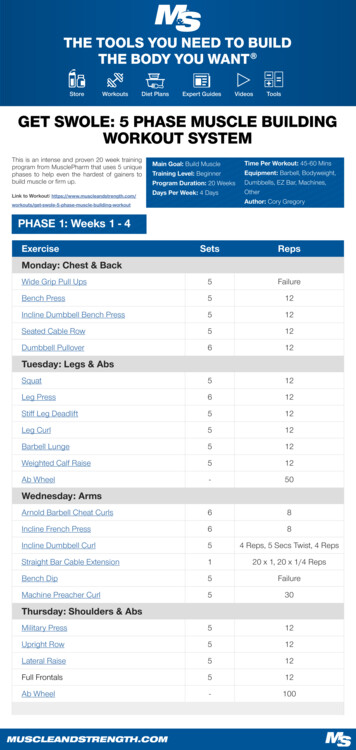
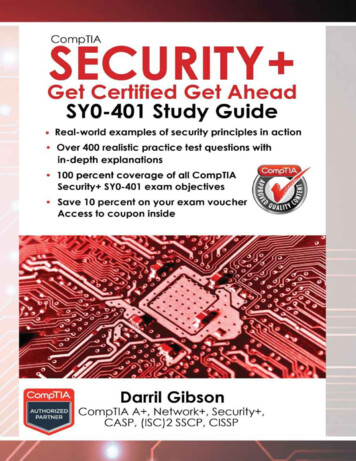

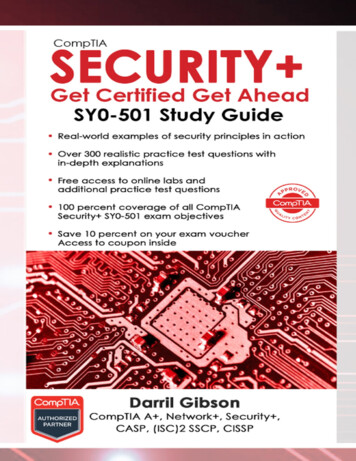
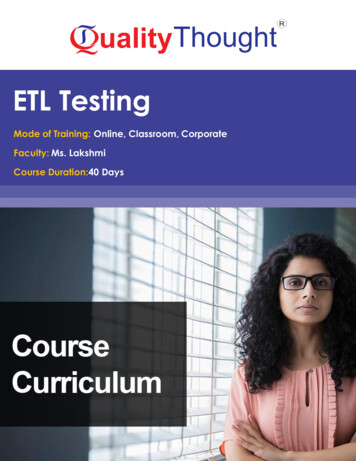
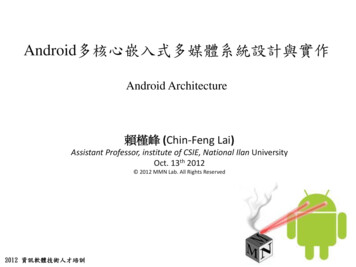

![Unreal Engine 4 Tutorial Blueprint Tutorial [1] Basic .](/img/5/ue4-blueprints-tutorial-2018.jpg)
